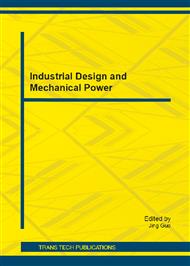[1]
Kyo, S., Sakurai, K., & Okazaki, S. (2011). IMAPCAR: A 100 GOPS In-Vehicle Vision Processor Based on 128 Ring Connected Four-Way VLIW Processing Elements. J Sign Process Syst (2011) 62: 5–16.
DOI: 10.1007/s11265-008-0297-0
Google Scholar
[2]
Sun, Z., Bebis, G., & Miller, R. (2006). On-road vehicle detection: review. IEEE Transactions on Pattern Analysis and Machine Intelligence, 28(5), 694–711 May.
DOI: 10.1109/tpami.2006.104
Google Scholar
[3]
A de la Escalera, JM Armingol. Traffic sign recognition and analysis for intelligent vehicles - Image and vision computing, 2003 – Elsevier.
DOI: 10.1016/s0262-8856(02)00156-7
Google Scholar
[4]
C Bahlmann, Y Zhu, V Ramesh . A system for traffic sign detection, tracking, and recognition using color, shape, and motion information. Intelligent Vehicles 2005 - ieeexplore. ieee. org.
DOI: 10.1109/ivs.2005.1505111
Google Scholar
[5]
JH Lee. Traffic sign recognition by division of characters and symbols regions. Proceedings KORUS (2003).
Google Scholar
[6]
A Ruta, Y Li. Real-time traffic sign recognition from video by class-specific discriminative features. Pattern Recognition, 2010 – Elsevier.
DOI: 10.1016/j.patcog.2009.05.018
Google Scholar
[7]
Kwok, On the Design of an SoPC Based Multi-Core Embedded System, Complex, Intelligent and Software Intensive Systems, 2008. CISIS (2008).
DOI: 10.1109/cisis.2008.96
Google Scholar


